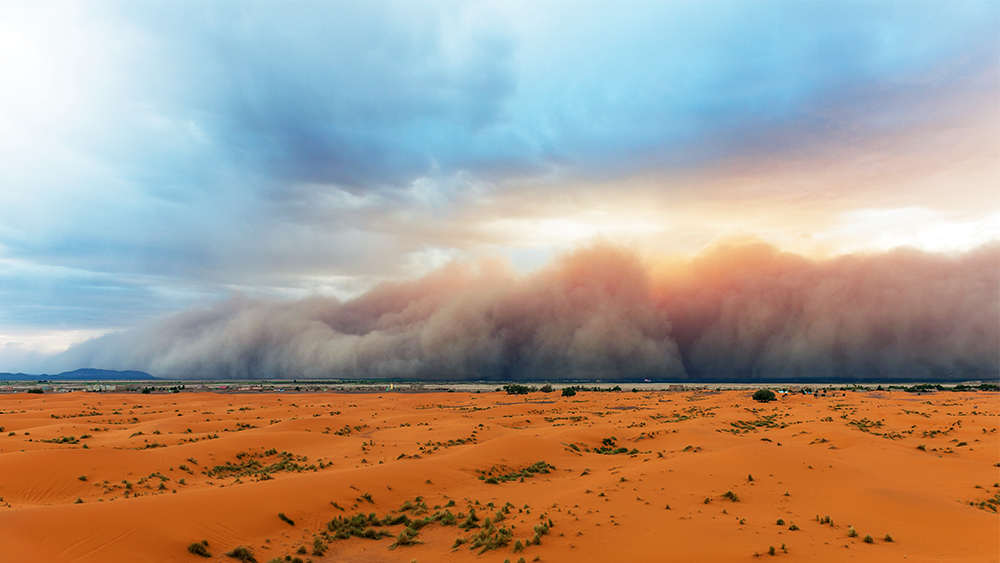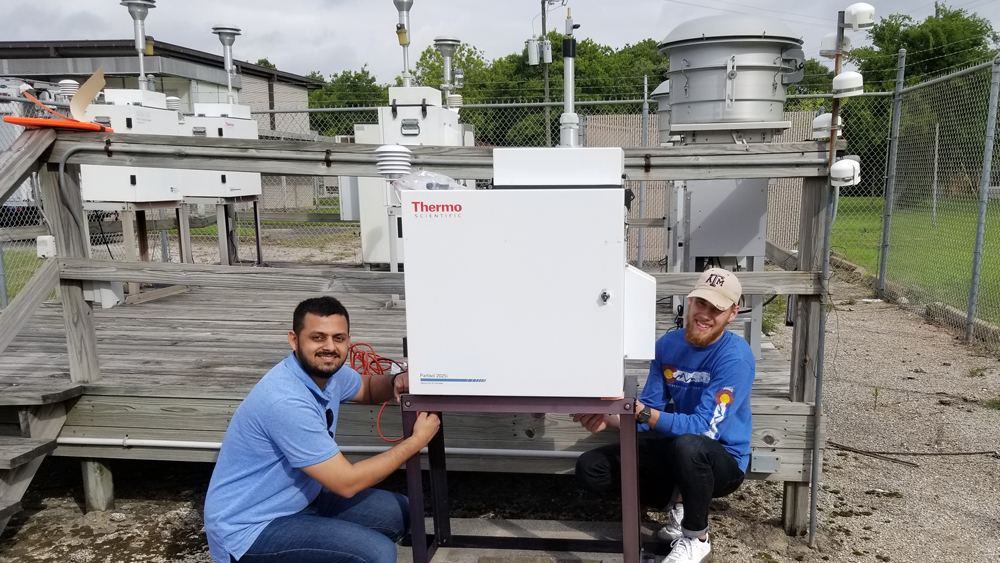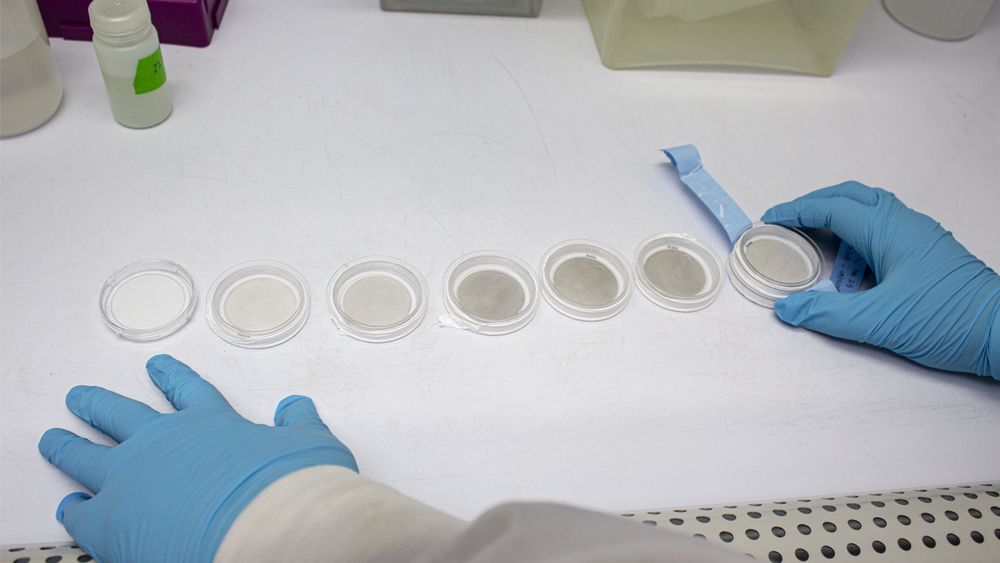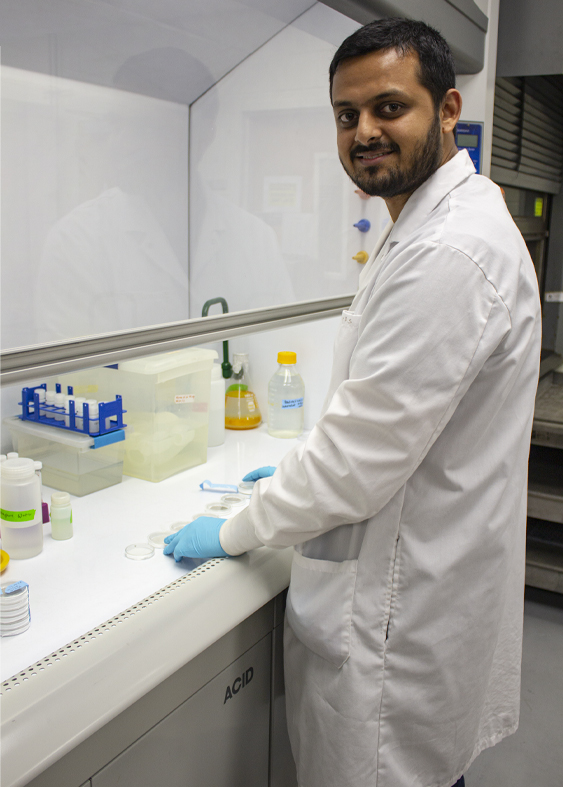
Every summer, large-scale Saharan dust plumes from Africa travel more than 6,000 miles on trade winds across the Atlantic Ocean, impacting places in the eastern Caribbean, and sometimes passing over the southern United States.
The journey to Houston takes about 10 days. And once it settles over the city, breathing the contaminated air could lead to a multitude of health issues ranging from irritated eyes to cancer, depending on what's in the dust-laden air — even after it has traveled thousands of miles across the ocean after mixing with Houston area-aerosols.
"To assess potential health impacts of the dust, there is a clear need for a fuller understanding of its chemical and physical properties," said Dr. Shankar Chellam, the J. Walter "Deak" Porter '22 and James W. "Bud" Porter '51 Professor in the Zachry Department of Civil and Environmental Engineering at Texas A&M University.
He and a team of researchers set out to confirm that the dust affects Houstonians' air quality. When pollution is detected in urban areas, it's easy to blame industrial companies, but Chellam said there are other unexpected, natural factors such as dust and smoke from fires that can also affect air quality.

"One of the big problems in air pollution is air has no boundaries," he said. "How do you know where the sources of pollution are coming from? How do you know whom to police? Unless you know where the source is, how do you reduce air pollution?"
These are questions Chellam has been asking for two decades. He has spent the last 20 years investigating the amount of human-made, locally sourced pollutants used in petroleum refining in the industrial areas of Houston. This research led to his most recent studies of the Saharan dust plumes.
Chellam and his research team published their latest findings in the November issue of the Journal of Geophysical Research — Atmospheres.Chellam began his research by setting up a test site in an industrial area in Houston to collect air quality samples. During testing, he and his team discovered the natural phenomenon that affected air quality and dusted Houston, literally.
He was able to use the same research techniques used to study industrial air pollution to determine the presence of the African dust in the most microscopic form. Chellam identified the "fingerprint" or signature of African dust and then separated it from other types of pollution found in samples collected in Houston, including industrial dust from crude oil refineries, vehicle pollutants and wildfire smoke.

Collaborators collected samples of the African dust in Barbados that served as a control sample because they didn't contain industrial pollutants found in the United States. It's also the eastern-most Caribbean island and the first to be impacted by the traveling dust, making it an ideal test site. Galveston was used as a background site because it is not affected by significant local pollution sources from industries.
For this study, measurements were made over six weeks from early August to mid‐September 2014 in all three locations. Almost every summer, they put out samplers to track episodic emissions.
The results revealed that the fine dust particles in all samples were a match.
"We show that such dust events significantly increase the concentration and alter the chemical concentration of ambient fine particle matter in southern Texas in summer and early autumn," Chellam said.

Doctoral student Sourav Das traveled to Houston to set up and evaluate the sampling equipment, which captures and filters the air particles. Das then analyzed the results in the civil engineering lab.
“All of the sources of pollution have a unique signature,” he said. “So each signature helps us better quantify each of these sources.”
They can tell how much of each pollutant is in each sample collected by looking at its elemental composition. Chellam’s team is now working with the Center for Disease Control and Prevention to analyze the potential microscopic organisms that travel in the dust.
"Along with the chemical signature, we are looking to see if there is any biological signature to this dust, which could include fungi, which are highly robust, that would survive this trek from North Africa to Houston," Chellam said.
These microscopic organisms could impact the health of the public, so they are continuing to research the possible health implications.
The research was partly funded with grants from the Texas Commission on Environmental Quality and the Texas Air Research Center.